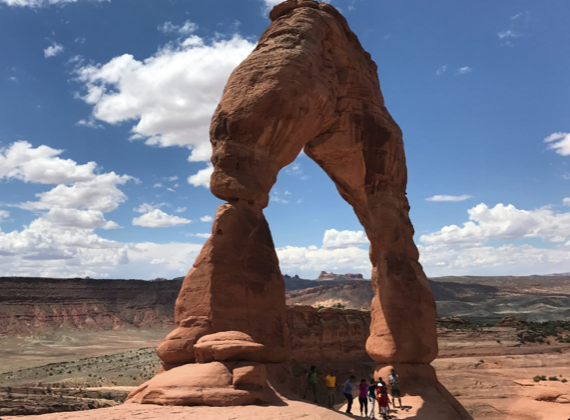National parks define America. There are 433 national park sites throughout the U.S. and each state contains at least one that characterizes it. What is California without the serenity and grandeur of Yosemite and Sequoia National Parks? Who doesn’t associate Everglades National Park with Florida? The National Park Conservation Association [NPCA] emphasizes the importance of our national parks to America as a whole.
“National parks speak to who we are as Americans. For more than a century, our country has designated and stewarded our natural treasures. We do so, not just because these lands are literally what make America beautiful, but also because scholarly study have amassed a tremendous body of knowledge that makes an objective, nonpartisan case for the conservation of public lands,” the NPCA said.
Recently, the Trump administration has fired about 1,000 newly hired National Park Service employees who maintain and clean parks, educate visitors and perform other functions as part of its effort to downsize government. Although a thousand might not seem like that large of a number in the grand scheme of things, many fear that these cuts are only the first steps being taken to dramatically reduce national park services and funding.
“Steps are being taken to remove barriers to drilling and mining on public lands, with even national monuments on the table. Park staffing is being cut drastically. We’re seeing LGBTQ contributions to America’s history being erased,” the NPCA said. “Plans have been announced to shutter visitor centers, museums and other important facilities through lease terminations. With reduced staffing to manage our parks, we already are seeing limited hours at visitor centers and closed sections of parks because the limited staff who remain just can’t keep up.”
National parks are not only enjoyed by nature-lovers but support local economies and increase tourism revenue. Many Robinson students, in particular, enjoy visiting the national parks and participating in their services.
“Every summer I drive up the East Coast and I like to visit all the national parks and I camp at one during the summer and I’m sure I’ll be able to notice the difference in the quality of the park. This is just ridiculous, this is not the time to take away money from conserving our resources,” Megan Kalil (’26) said.
Especially during the summer many students take part in visiting the national parks and getting some much needed time with nature, after being stuck inside constantly during exam season.
“Last year in the summer I went to Canyonlands National Park. I backpacked and whitewater rafted for about 3 weeks. This year I wanted to work in the national parks in the Student Conservation Association, but as I applied for jobs, I saw that many of them were getting cancelled and that I wouldn’t be able to work this year because of the defunding,” Lily Polender (’26) said. “If we’re defunding the parks, that means less people are going to be able to go and get awareness about the state of the environment right now. Trash is going to pile up, people won’t be able to go to visitor centers and learn more if rangers are busy stretched very thin trying to do everything around the park, campsites won’t be able to be maintained as well. There will just be a lot of consequences with the visual and educational aspects.”
Investing in national parks is investing in the nation’s future. Without adequate funding, we risk losing the natural beauty, biodiversity and cultural heritage that make these places so special. Protecting and properly funding our national parks should be a priority—not an afterthought.
“We have a legacy of being America the Beautiful, and that’s something that we should try our best to maintain,” Polender said.


